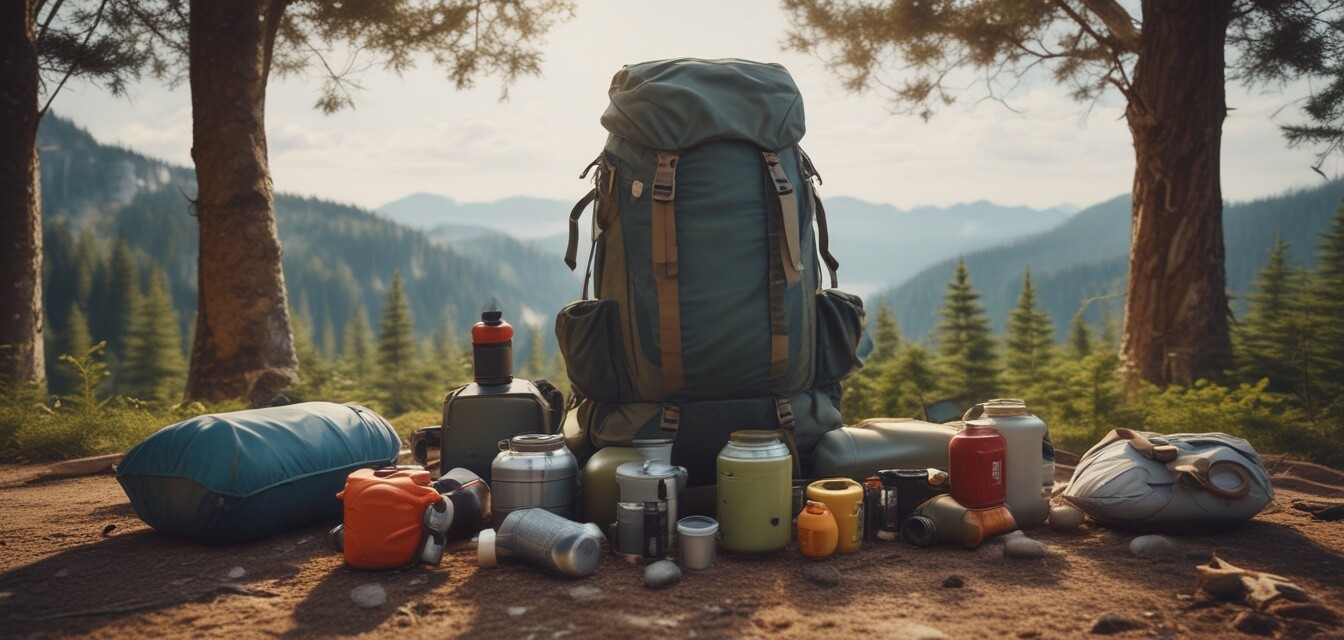
Practical Tips for Packing Efficiently for Camping
Key Takeaways
- Maximize space by utilizing packing cubes and compression bags.
- Prioritize essential gear to avoid overpacking.
- Organize items by category for easy access.
- Use versatile items to reduce the number of separate gear pieces.
- Plan your meals in advance to bring the right cooking essentials.
Packing efficiently for camping can seem like a daunting task, especially for beginners. However, with a bit of organization and strategic planning, you can maximize your space and ensure you have all the essentials without the burden of overpacking. This guide provides you with practical tips that will help you squeeze the most out of your camping gear while keeping your load manageable. Let’s dive in!
Understanding the fundamentals of camping packing
Before diving into the specific tips, it's essential to understand the core fundamentals of packing for camping. The two primary goals should be:
- **Efficient use of space**: Making sure that your gear fits comfortably in your bag and is easy to access.
- **Carrying essentials**: Ensuring you have everything you need without bringing unnecessary items.
1. Selecting the right gear
Choosing the right gear is the first step towards efficient packing. Keep these points in mind:
- Durability: Opt for gear that withstands the elements.
- Lightweight: Pick lightweight options that are easier to carry.
- Multi-functionality: Consider items serving multiple purposes to save space.
Common gear types to consider
| Gear Type | Suggestions |
|---|---|
| Tents | Lightweight and easy to set up |
| Sleeping bags | Compact and warm for varying temperatures |
| Cooking gear | Pots that stack inside each other |
| Backpacks | Consider a pack with a waist strap for better weight distribution |
2. Utilizing packing techniques
Now that you've selected the right gear, it’s time to utilize effective packing techniques:
- Packing cubes: Use different packing cubes for each category—clothes, cookware, toiletries.
- Compression bags: Great for sleeping bags and clothing to save space.
- Rolling clothes: Instead of folding, roll your clothes to maximize space and reduce wrinkles.
Example packing layout
| Category | Items to Include |
|---|---|
| Clothing | Base layers, insulation, socks, and waterproof jacket |
| Cooking & Meal Prep | Pots, utensils, stove, and lighter |
| Safety & Navigation | First-aid kit, maps, compass |
| Sleeping Gear | Sleeping pad, pillow, and bag |
3. Organizing your camping gear
Keeping your items organized can greatly improve your camping experience. Here are some tips:
- Use clear containers: Transparent bins allow you to quickly find what you need.
- Label everything: Make sure all your bags and containers are clearly labeled.
- Access priority: Pack frequently used items on top for easy access.
4. Meal planning is crucial
Plan your meals in advance to enhance your camping experience and reduce excess packing:
- Plan your meals: Create a meal plan to know what cooking gear and food to bring.
- Pre-pack food: Portion meals into containers for easy access.
- Use lightweight food options: Dried foods are compact and lightweight.
Sample meal plan ideas
| Day | Meals |
|---|---|
| Day 1 | Breakfast: Oatmeal, Lunch: Sandwiches, Dinner: Grilled veggies |
| Day 2 | Breakfast: Trail mix, Lunch: Wraps, Dinner: Pasta |
5. Remember the essentials
Don’t forget the essentials! Making a checklist can help ensure nothing is left behind:
- Tent, sleeping gear, cooking gear
- Food and water
- Clothing appropriate for the weather
- Safety items like a first-aid kit and navigation tools
Sample essential packing list
| Item | Quantity |
|---|---|
| Tent | 1 |
| Sleeping bag | 1 |
| Cooking utensils | 1 set |
| Food and water | As needed per meal plan |
Tips for beginners
- Start small: Focus on packing light for your first trips.
- Practice setting up your gear at home to build confidence.
- Involve others in your packing process for shared tips and advice.
Pros
- Efficient packing saves time and energy.
- Reduces stress while camping.
- Ensures you have everything needed for a comfortable trip.
Cons
- Overpacking can still happen without careful planning.
- Newcomers might struggle with prioritizing essentials.
Efficiently packing for camping is all about planning and prioritizing. By using these tips, you can prepare effectively for your adventures outdoors. If you'd like to explore more about camping essentials, check out our Camping Buying Guides for detailed insights.
Don’t forget to visit our Backpacks & Carriers section for essential gear and tips on selecting the right backpack for your needs. Happy camping!